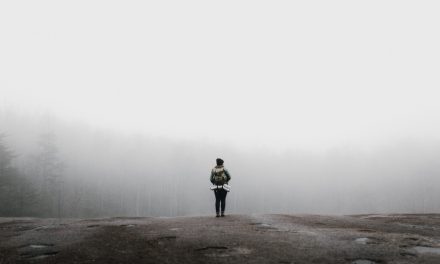Have you ever thought about the first thing you would do if you ever run into a Yogi while out in the wild? Panic, scream, run, or take a selfie? None of the above, not if you want to remain alive.
Having a close encounter with a bear is intimidating, but these massive creatures really want nothing to do with you. Thanks to media sensationalism, we all dread being ripped apart by a grizzly. In real life however, you are more likely to die from a bee sting than a bear attack.
On the off chance that you find yourself hiking in bear territory, knowledge is your best defense. You need to be fully aware of your surroundings. The type of bear you are dealing with will make the difference between fighting back and playing dead.
This information will help prevent unnecessary bear hugs and help determine the best way to avoid putting yourself in danger. We have some pointers to guide you when you do encounter a bear.
Practice Social Distancing
One thing you should always keep in mind while exploring the wilderness is bears like their personal space. They have very little interest in humans and if they can hear you coming, they will avoid you.
If you spot a bear in the distance, keep it that way. Do not approach it. If it has not seen you, back away slowly and stay out of sight. When possible, alter your route. Never pressure the bear to move by approaching it. This will make the bear feel threatened and defensive. Always remember that you are in their territory, and not the other way around.
When the bear can see you, stay calm. Start talking softly to the bear and very slowly, wave your arms up and down. You want the bear to identify you as a human and not as prey. Do not shout, scream, or make sudden movements. If you have small children with you, pick them up, and keep them quiet.
The one thing you must never do is run. Just like dogs, bears have a predatory instinct to chase moving animals. And they will catch you. Even Usain Bolt is no match for a bear! Move back slowly, moving sideways instead of straight back. This is non-threatening to the bear and will help you keep your footing.
Identify Your Bear
As fun as it may be to start guessing names like Baloo, Barney, or Paddington, this is not what we mean. It is important to be able to recognize what species of bear you are looking at because this will determine how to react in the event of an attack.
Are you staring at a black bear or a brown bear? Not all black bears have black fur. They can be cinnamon, chocolate, blond, or even white.
All grizzlies are brown bears, but not all brown bears are grizzlies. Brown bears are in the same color range as black bears. A black bear would run away from a loud group of people, but you should never shout at a grizzly. Confused?
Although you cannot tell the species from the coat color, there are two main features that can help you identify what bear you have encountered: The face and shoulders.
Brown bears have a large muscular hump on the shoulder bone. It sticks out of its back and is easy to spot from a distance. Their faces have a concave shape from the forehead to the nose. Black bears do not have a shoulder hump. Their faces form a straight line from the forehead to the nose. Black bears also have prominent taller ears than brown bears.
Once you have identified what bear you have encountered, you can deal with it reasonably if it does attack you.
Differentiate Between A Bluff Charge or An Actual Attack
As hard as it is to believe, bears rarely attack humans. There are three reasons why a bear may attack you:
- A mother protecting her cubs
- A bear defending a food source or territory
- A surprise confrontation from a human
When any of these things happen, the bear may make a bluff charge to scare you off. Perhaps, if it is really disrupted, it may attack you. There are signs you can look out for.
A bluff charge: The bear will try and look larger than you by lifting its head and pointing its ears upwards. It may smack its lips, roar, or pound the ground with its front paws. It can also bound suddenly towards you and then veer off to the side and stop. This behavior shows the bear is stressed by your presence.
An actual attack: A predatory bear will not make any noise. The ears point forward, and the head goes down, with its full attention focused on you. This type of bear is hunting.
What to Do If A Black Bear Attacks
If you encounter an aggressive black bear, yell loudly and raise your arms to look larger. Get everyone together if you are in a group and make as much noise as possible. If you can, get hold of a long, sturdy stick for defense. Bear spray comes in handy here. Pull it out and remove the safety lock.
If the bear is approaching out of curiosity, keep trying to scare it away with noise while backing away. If it is approaching menacingly, do not play dead. Fight back with sticks, rocks, and punches to the eyes and nose. Like your life depends on it, literally! Above all, only use the bear spray when the bear is 20 feet (6.1 m) from you. Aim the nozzle just below the bear’s head and spray like your life depends on it (literally).
What to Do If A Grizzly Attacks
Grizzly bears are more unpredictable and aggressive than black bears. If you have surprised a grizzly, back away slowly while talking calmly. Do not make eye contact. Get your bear spray ready, but do not turn and run.
If a grizzly actually makes physical contact with your body, drop down and play dead. Never do this until the bear actually touches your body because you will just pique its curiosity if you fall too early. When playing dead, lie flat on your stomach. Protect the back of your neck and head with your hands. If you have a backpack, keep it on to protect your back.
Keep your legs and elbows wide apart to make it harder for the bear to flip you over. If that happens, keep rolling until you are back on your stomach again. Remain as still as possible and wait for the bear to get bored and leave. Do not get up until you are completely sure the bear is gone.
HOW TO CARRY AND USE BEAR SPRAY
- Bear attacks happen in an instance. When you notice a bear, do not engage it unless it is charging at you. Stay away from cubs; the mother is never too far from the young ones.
- Always keep the bear spray on your person, on your stronger side for easy access and deployment. This takes practice since you can’t predict the likelihood or proximity of an attack.
- Keep your bear spray on hand and safety off. Stay ready especially if you are in a place with a high likelihood of encountering bears.
- When a bear charges from a distance, grab your can and steady your arm. You need to learn how to time so you don’t fire too soon.
- If you know the range on the can, estimate the distance and press the trigger in bursts of 2 seconds.
- As you fire, cover your nose as well and create some distance between you and the fog. The pepper will irritate you too.
- Fire while backing away until you notice the bear is disoriented. At this point, back away to a safe point.
WHAT DO I DO AFTER REPELLING A BEAR ATTACK
- Clear that area. Bears might launch an attack if the spray was not too effective
- Clean up after the encounter. The concentration of the spray might cling on your skin and sting.
- Keep the safety on.
The take-away
Bears are extremely smart creatures, but when provoked, they can be dangerous. They do not like surprises. They can out-run and out-wit you. Bears have a sense of smell 7 times stronger than that of dogs and will smell camp delicacies from miles away. So pack your food and trash properly when in bear territory.
Never turn your back on a bear. Trying to aim a tiny bullet at a 700-pound beast charging at 30mph will just make it angry. Bear spray is the best and safest option. Walk in groups, make noise, and have fun, seeing as now you know what to do if you encounter a bear.
- Hammock Benefits: What The Tent Industry Doesn’t Want You Knowing - November 19, 2022
- How I Maintain My Hygiene When Camping - November 19, 2022
- How to Survive a Meet & Greet with a Bear - November 18, 2022






